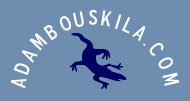September 27, 2007
Bird Seed
Seed provide nutritious meals for birds and help provide fats for the birds’ bodies. Fat is used by the bird’s body to provide energy for activities. Proteins in seed help strengthen muscles. There is a variety of bird seeds and mixtures available to choose from on the market. Inexpensive seed mixtures are available but contain lots of filler seed that is not appealing to most wild birds.
(more…)


